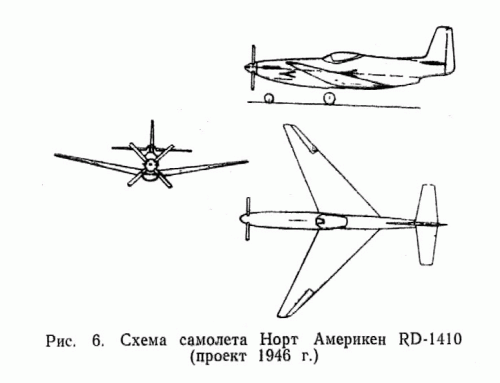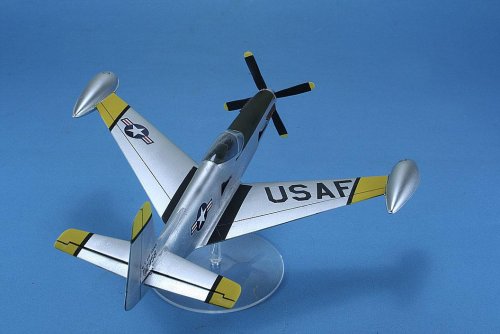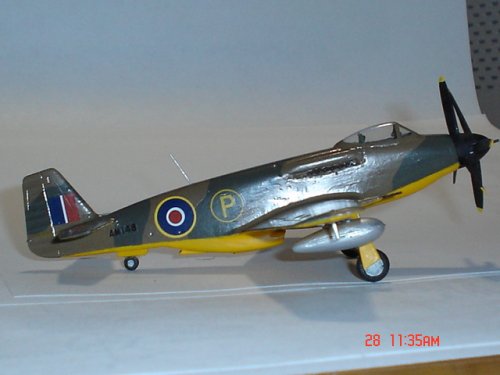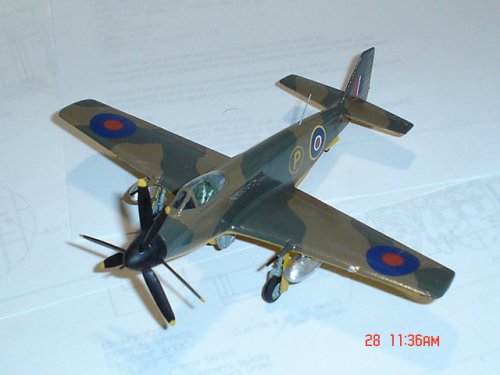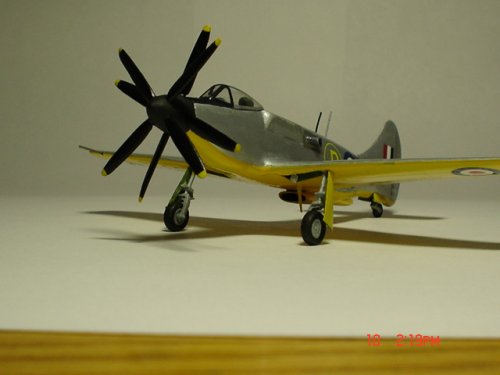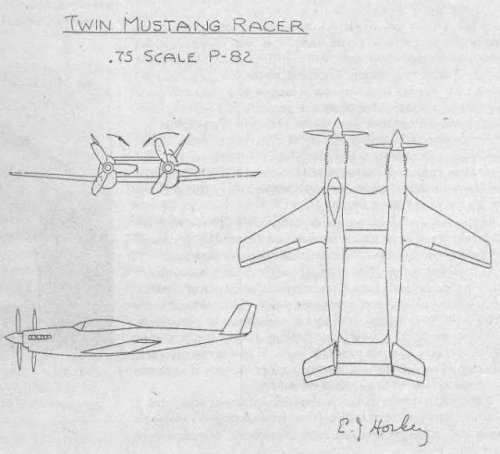You are using an out of date browser. It may not display this or other websites correctly.
You should upgrade or use an alternative browser.
You should upgrade or use an alternative browser.
P-51 Mustang & F-82 Twin Mustang Proposals and Variants
- Thread starter GTX
- Start date
Jemiba said:All the better ! I think, we'll see it in the mentioned future APR issue ?
Redrafted in a near-ish future USBP.
Steve Pace
Aviation History Writer
- Joined
- 6 January 2013
- Messages
- 2,266
- Reaction score
- 224
So that's where it came from - not in my book. It never happened! -SP
- Joined
- 25 June 2009
- Messages
- 14,704
- Reaction score
- 5,964
Steve Pace said:So that's where it came from - not in my book. It never happened! -SP
???
Re: Mustang Variants / North American D-118
And now the whole report can be yours:
http://www.aerospaceprojectsreview.com/blog/?p=2012
fightingirish said:Nice find, Orionblamblam! B)
And now the whole report can be yours:
http://www.aerospaceprojectsreview.com/blog/?p=2012
Skyblazer said:I knew about the F.T.B. Mustang project, but I thought the one depicted in the model was different. It uses a P-51B-type fuselage and canopy instead of the later P-51D-type used in your graphics, Justo.
It wasn't a P-51B that Rolls Royce used, it was some 'surplus to requirements' Mustang Mk.1's ( the Allison engine variant) that were assigned to the project. The Rolls Royce Heritage Trust has a book on it called 'Rolls Royce and the Mustang' written by David Birch who is also the Official Rolls Royce Historian. The engine in the photos in the above posts is a Griffon. I had contacted David about this aircraft and asked him if he had any dimensional drawings of it, he told me that a 1/10 wind tunnel model of it still exists and he knew who has it. I asked him to confirm some dimensions I needed, which he did. He also told me that after the wind tunnel testing had been done, they found that the tail surfaces needed about 60% more area and that to expedite the matter they would used a Tempest tail assembly had it flown.
These are my two models of it, green/brown one is the Rolls Royce Private Venture Fighter, the silver one is the Flying Test Bed with the Tempest tail fitted and also powered by a Crecy 2-Stroke engine.
(UPDATED the photo attachments)
Attachments
Does anyone have any information on a possible P-51E Mustang?
I just ran across a reference to it in FLYING Magazine; September 1945; with the terse text:
"Between the D and the H, the E died on the design boards..."
I just ran across a reference to it in FLYING Magazine; September 1945; with the terse text:
"Between the D and the H, the E died on the design boards..."
Steve Pace
Aviation History Writer
- Joined
- 6 January 2013
- Messages
- 2,266
- Reaction score
- 224
Hi Ryan,
From what I learned for my Mustang book the P-51E-NT (NA-111) was to be Dallas-built P-51D-NTs but they became NA-111 P-51K-NTs airplanes instead. NAA initiated work on NA-111 on 3 May 1943.
Have you posted any new SACs lately? -SP
From what I learned for my Mustang book the P-51E-NT (NA-111) was to be Dallas-built P-51D-NTs but they became NA-111 P-51K-NTs airplanes instead. NAA initiated work on NA-111 on 3 May 1943.
Have you posted any new SACs lately? -SP
- Joined
- 31 May 2006
- Messages
- 657
- Reaction score
- 439
Where are the charger air intakes on the Griffon and Crecy Mustang models? Is all intake air coming through the cooling air intakes?
Nick Sumner said:Is all intake air coming through the cooling air intakes?
Yes, considering the charger is located practically above it
Steve Pace
Aviation History Writer
- Joined
- 6 January 2013
- Messages
- 2,266
- Reaction score
- 224
I had always wondered about the large canopy the XP-51F,G & J got, until I saw some photos of them a while ago that explained a lot. It would seem they raised the cockpit up about 6 or 8 inches so needed a bigger canopy over it as the fuselage used was basically the P-51D fuselage (except the 'J' got the 13" extension that is familiar on the P-51H). On the P-51H, it still had the raised cockpit but then had built up fuselage sides and a regular P-51D canopy installed. The XP-82/P-82 had an almost identical fuselage to the P-51H, only the natural top and bottom profile lines where just continued to the rear so they merged at a point further back.
Below is a comparison between a P-51H and F-82 fuselage, keep in mind the Allison engine installation on the F-82 was deeper on the F-82G/H than the Merlin arrangement on the P-51H
The lower picture is of a P-51D/P-51H comparison so you can see that the 'H' was much bigger. I've used the new tool Airfix P-51D kit and a High Planes P-51H in this comparison, I've also been using the Airfix kit so I can build an XP-51F or G so I've cut the rear canopy fairing out (if anyone is wondering)
Below is a comparison between a P-51H and F-82 fuselage, keep in mind the Allison engine installation on the F-82 was deeper on the F-82G/H than the Merlin arrangement on the P-51H
The lower picture is of a P-51D/P-51H comparison so you can see that the 'H' was much bigger. I've used the new tool Airfix P-51D kit and a High Planes P-51H in this comparison, I've also been using the Airfix kit so I can build an XP-51F or G so I've cut the rear canopy fairing out (if anyone is wondering)
Attachments
- Joined
- 26 May 2006
- Messages
- 34,744
- Reaction score
- 15,608
Hi,
can we consider those two modern racer twin Mustang aircraft a real designs ?.
http://alternathistory.org.ua/gonka-za-prizrakom-skorosti-poslednii-pryzhok-mustanga-chast-2?mini=calendar%2F2015-03
can we consider those two modern racer twin Mustang aircraft a real designs ?.
http://alternathistory.org.ua/gonka-za-prizrakom-skorosti-poslednii-pryzhok-mustanga-chast-2?mini=calendar%2F2015-03
Attachments
- Joined
- 25 June 2009
- Messages
- 14,704
- Reaction score
- 5,964
hesham said:and now I know it was real designs,we can open new topic for it.
Only if there's more to add than these pictures, which I'm not sure about. Although it certainly has nothing to do in this here topic, it's not completely unrelated as Horkey was a former North American engineer, deeply involved in design and development of most fighters during and after WW2. He died in 1996 and his design died with him.
I found a memo dated 20 SEP 1946 in my files from NARA II titled:
"Conservation of P-47, P-51 type aircraft" and there is a paragraph:
"2. Air materiel Command has taken the following action with P-51H and P-47 tooling:
a. Authorized the retention of North American P-51H tooling originally designed for the production of approximately sixteen airplanes per day. The tooling for the Packard Rolls-Royce V-1650 engine has been scrapped. However, the Allison engine may be used, in which case it is believed sufficient engines could be secured with existing tooling and facilities."
so there you have it; why the production F-82s used Allisons instead of Merlins.
"Conservation of P-47, P-51 type aircraft" and there is a paragraph:
"2. Air materiel Command has taken the following action with P-51H and P-47 tooling:
a. Authorized the retention of North American P-51H tooling originally designed for the production of approximately sixteen airplanes per day. The tooling for the Packard Rolls-Royce V-1650 engine has been scrapped. However, the Allison engine may be used, in which case it is believed sufficient engines could be secured with existing tooling and facilities."
so there you have it; why the production F-82s used Allisons instead of Merlins.
Adventurer104
Retired Texas Peace Officer
- Joined
- 5 July 2013
- Messages
- 49
- Reaction score
- 18
From Wikipedia:
"The XP-82 was to be powered by two Packard-built Rolls-Royce V-1650 Merlin engines. Initially, the left engine was a V-1650-23 with a gear reduction box to allow the left propeller to turn opposite to the right propeller, which was driven by the more conventional V-1650-25. In this arrangement both propellers would turn upward as they approached the center wing, which in theory would have allowed better single-engine control. This proved not to be the case when the aircraft refused to become airborne during its first flight attempt. After a month of work North American engineers finally discovered that rotating the propellers to meet in the center on their upward turn created sufficient drag to cancel out all lift from the center wing section, one quarter of the aircraft's total wing surface area. The engines and propellers were then exchanged, with their rotation meeting on the downward turn, and the problem was fully solved. The first XP-82 prototype (44-83886) was completed on 25 May 1945, and made the type's first successful flight on 26 June 1945. This aircraft was accepted by the Army Air Forces on 30 August 1945, whose officials were so impressed by the aircraft, while still in development, that they ordered the first production P-82Bs in March 1945, fully three months before its first flight."
"The XP-82 was to be powered by two Packard-built Rolls-Royce V-1650 Merlin engines. Initially, the left engine was a V-1650-23 with a gear reduction box to allow the left propeller to turn opposite to the right propeller, which was driven by the more conventional V-1650-25. In this arrangement both propellers would turn upward as they approached the center wing, which in theory would have allowed better single-engine control. This proved not to be the case when the aircraft refused to become airborne during its first flight attempt. After a month of work North American engineers finally discovered that rotating the propellers to meet in the center on their upward turn created sufficient drag to cancel out all lift from the center wing section, one quarter of the aircraft's total wing surface area. The engines and propellers were then exchanged, with their rotation meeting on the downward turn, and the problem was fully solved. The first XP-82 prototype (44-83886) was completed on 25 May 1945, and made the type's first successful flight on 26 June 1945. This aircraft was accepted by the Army Air Forces on 30 August 1945, whose officials were so impressed by the aircraft, while still in development, that they ordered the first production P-82Bs in March 1945, fully three months before its first flight."
Adventurer104 said:From Wikipedia:
This aircraft was accepted by the Army Air Forces on 30 August 1945, whose officials were so impressed by the aircraft, while still in development, that they ordered the first production P-82Bs in March 1945, fully three months before its first flight."
Same article says that from an initial 500 planned, it was cut to 270, before finally only 20 x P-82Bs were accepted.
ZacYates
LHX SuperTeam fanboy
- Joined
- 26 December 2012
- Messages
- 156
- Reaction score
- 136
One of the prototypes - the second, I think? - is in the final stages of a restoration to fly, so is a handy reference: http://xp-82twinmustangproject.blogspot.co.nz/
At least one engine run has been undertaken.
At least one engine run has been undertaken.
RyanC said:I found a memo dated 20 SEP 1946 in my files from NARA II titled:
"Conservation of P-47, P-51 type aircraft" and there is a paragraph:
"2. Air materiel Command has taken the following action with P-51H and P-47 tooling:
a. Authorized the retention of North American P-51H tooling originally designed for the production of approximately sixteen airplanes per day. The tooling for the Packard Rolls-Royce V-1650 engine has been scrapped. However, the Allison engine may be used, in which case it is believed sufficient engines could be secured with existing tooling and facilities."
may ı ask how many '47s ? If they are asking for 16 Mustangs a day , they might ask at least as half Thunderbolts ?
IIRC, the USAAF had made the decision to phase out the P-47 series before the end of WW II. The issue apparently had to do with economics and logistics, as the late versions of the P-47 and P-51 were roughly equal in combat capability, but the P-51 was a smaller simpler aircraft, reflected in the maintenance and supply requirements. I am a big P-47 and R-2800 advocate and if I had been a pilot during WW II, the P-47 would have been my US fighter of choice. Of course if I had been a pilot back then, I would have had no choice.
Best regards,
Artie Bob
Best regards,
Artie Bob
BTW, in the late 1940s, F-82s were stationed at Godman Field about 50 miles from where I lived. Almost daily, they would fly low over our house, fast and very loud, what a kick for a young airplane nut! The final model Allisons were not your father's P-40 mills and IMHO the equivalent of late model Merlins. Slightly later, we would be overflown by B-36 aircraft once or twice a week, no need for radar, you could hear the rumble when they were thirty or forty miles away. At the speed and altitude they flew, on a clear day you could watch them for about 15 minutes.
Best regards,
Artie Bob
Best regards,
Artie Bob
- Joined
- 13 June 2007
- Messages
- 2,172
- Reaction score
- 3,067
For how the P-51/F-51 was used after the war up thru Korea, the P-47 would have been a far more effective ground attack aircraft with a better survival rate - hit the coolant system on the P-51 and your done.
Very cool on the F-82 fly over. I remember my Grandfather telling me about going cross country in Minnesota in the '50s and feeling his car start to rumble and shake. Thinking something was wrong with the car, he pulled over and shut it off but the rumble and shake didn't go away. He got out of the car to see a B-36 at medium altitude passing overhead...
Enjoy the Day! Mark
Very cool on the F-82 fly over. I remember my Grandfather telling me about going cross country in Minnesota in the '50s and feeling his car start to rumble and shake. Thinking something was wrong with the car, he pulled over and shut it off but the rumble and shake didn't go away. He got out of the car to see a B-36 at medium altitude passing overhead...
Enjoy the Day! Mark
r16 said:may ı ask how many '47s ? If they are asking for 16 Mustangs a day , they might ask at least as half Thunderbolts ?
b. All except a very small amount of P-47 special tooling has been destroyed. It is estimated it would require a year to replace the tooling with an expenditure of approximately $20,000,000. Since the Pratt and Whitney R-2800-73 engine is continuing in production, and is used in the C-82 and P-61 airplanes, it is believed no difficulty would be experienced in increasing the production of this engine to meet any projected production of P-47 airplanes.
This makes it clearer why the P-47 quickly exited AAF service post-war and never saw action in Korea, a theater far more suited to the Jug than the Mustang; because there wasn't any tooling left to manufacture spares for severely damaged aircraft.
GTX said:This was supposedly a proposal that North American had come up with in case the war had continued. As you can see, it had forward swept wings as well as an advanced (specifically how I don't know), a Westinghouse jet engine in the rear fuselage and a tricycle undercarriage.
I ran across this in NARA during this week in the Sarah Clark Files. Apparently this was an unsolicited proposal that NAA gave to the USAAF in the hopes of maybe pushing the Mustang forward.
USAAF took a look, and said... "hmm...nope."
jimbrooks said:This book does have 1 or 2 pages of details and pictures about a rocket-powered P-51.
"P-51D Flash" Program. Begun during the winter of 1944/45 to counter German Jet fighters. Was intended to counter them by providing the P-51 and P-47 with a brief one time burst of speed to 500~ MPH to catch up with jets.
Damn, I wish Steve Pace was still with us. He'd love the stuff I found. :-[
The AAF during the development of the P-51H just could not make up it's mind over armament:
4 x .50 cal
6 x .50 cal
4 x .60 cal
4 x 20mm
They tried pushing a 4 x 20mm armed pair of wings onto NAA, to which NAA replied "sorry, we're too busy with detail engineering on the P-51H and P-82 project to do a change order for 20mm in the P-51H."
4 x .50 cal
6 x .50 cal
4 x .60 cal
4 x 20mm
They tried pushing a 4 x 20mm armed pair of wings onto NAA, to which NAA replied "sorry, we're too busy with detail engineering on the P-51H and P-82 project to do a change order for 20mm in the P-51H."
- Joined
- 22 April 2012
- Messages
- 2,261
- Reaction score
- 2,253
The number common given for cancelled P-47Ns as a result if the end of the war is over 5,900 and it does seem to have been the favored fighter in the Pacific theater; it does seem strange that the USAF was subsequently so willing to destroy all the tooling.
M. A. Rozon
ACCESS: Confidential
- Joined
- 17 February 2007
- Messages
- 120
- Reaction score
- 74
JFC Fuller said:The number common given for cancelled P-47Ns as a result if the end of the war is over 5,900 and it does seem to have been the favored fighter in the Pacific theater; it does seem strange that the USAF was subsequently so willing to destroy all the tooling.
Just a shot in the dark...........
Perhaps money might be the culprit. It takes money and space to preserve production tooling. Could it be that in the competition for severely reduced funds after the end of WW2 a choice had to be made regarding aircraft types and their supporting infrastructure, military as well as production. The USAAF/USAF chose the P-51, casting aside the P-38, P-47 and others. Contributing to this may have been the nascent USAF's developing focus/myopia on the nuclear delivery mission at the expense of tactical air support, a mission requirement they may have thought/felt was becoming unlikely prior to the beginning of the war in Korea.
comments?
Bigger Guns, MORE POWER!
B)
Back then, things were obsolete in what, five years?
So preserving production tooling wasn't a going concern.
They scrapped the government owned P-51D tooling at one of the NAA plants in 1945 following a model changeover, for example.
So preserving production tooling wasn't a going concern.
They scrapped the government owned P-51D tooling at one of the NAA plants in 1945 following a model changeover, for example.
Sherman Tank
I don't want to change my personal text
- Joined
- 14 October 2016
- Messages
- 235
- Reaction score
- 211
The P-51 was also the newest and most general-purpose of the three major fighter designs, and especially given that jet propulsion was obviously going to become the norm for future fighters, maintaining three different types of piston-engined fighters was probably seen as an expensive extravagance.
_Del_
I really should change my personal text... Or not.
- Joined
- 4 January 2012
- Messages
- 1,315
- Reaction score
- 1,802
Preserving tooling is expensive. If that paper was written in '46, the P-80 was flying for two years prior to that, and the F-84 was in advanced development. Why would you preserve the tooling for the P-47 when jet aircraft were clearly the direction things were headed, and the piston-engined fighters retained were basically streamlined into the cheaper P-51. I imagine if they'd anticipated the usage of the P-51 in Korea, they might have looked harder at the P-47.
- Joined
- 18 October 2006
- Messages
- 4,202
- Reaction score
- 4,875
Have to agree that cost and nascent jet age were the prime reason. US was not flush with cash in 1945 and wanted to turn to domestic devices to keep employment up as soon as possible.
Similar threads
-
Future book : Twin Mustang: The North American F-82 at War
- Started by bercr
- Replies: 0
-
-
Junkers Ju 87 - Development, Variants , Related Projects
- Started by GTX
- Replies: 128
-
Early Martin 167 projects: genesis of the Maryland
- Started by Stargazer
- Replies: 2
-
What should Curtiss-Wright Aviation have done to survive?
- Started by Deltafan
- Replies: 31

